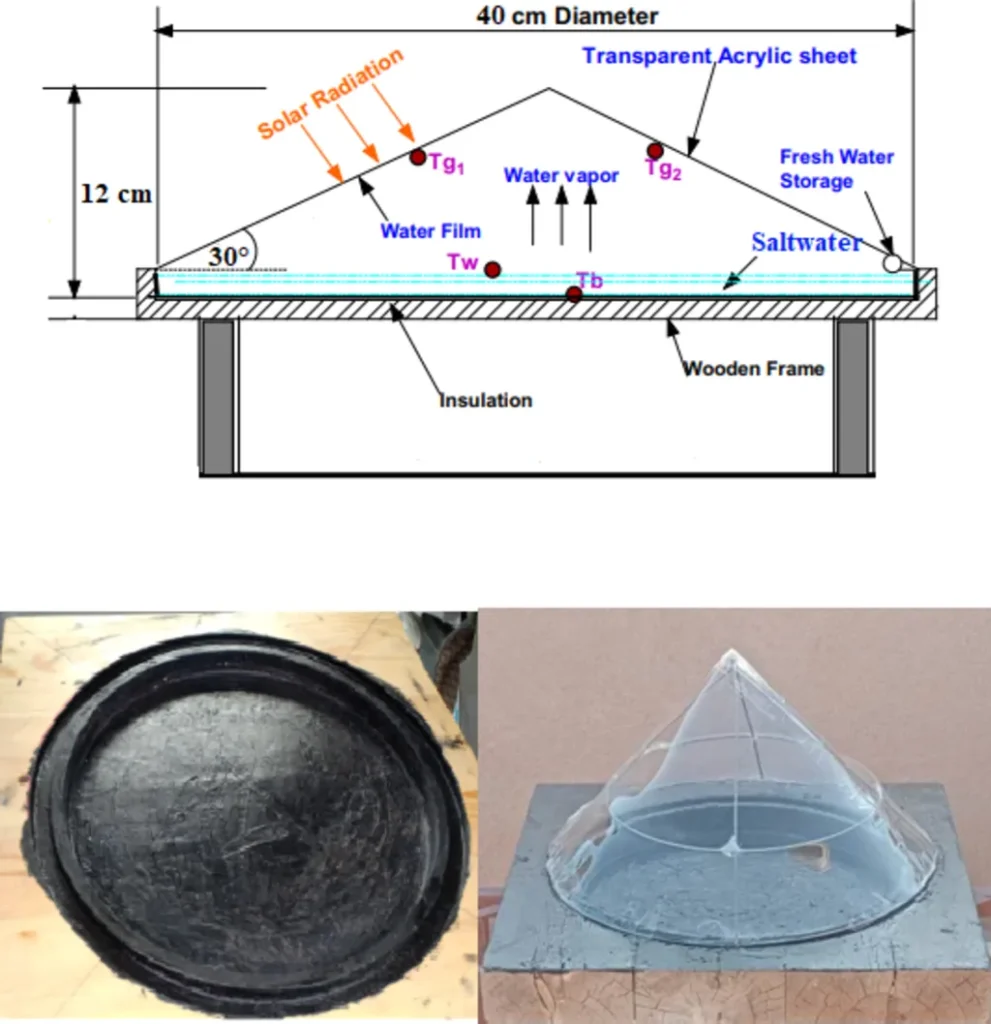In a world grappling with water scarcity, a novel approach to solar distillation is making waves in the energy sector, promising to enhance the efficiency of an age-old technology. Researchers, led by Vanessa Rosales Conserva, have turned to everyday materials—ceramic tiles and granite—to boost the performance of solar stills, offering a potential game-changer for regions struggling with water shortages.
Solar distillation, a method of obtaining fresh water from saline or contaminated sources using solar energy, has long been recognized for its simplicity and sustainability. However, its efficiency has often been a limiting factor. Rosales Conserva and her team set out to address this challenge by incorporating photothermal materials into asymmetric pyramid-shaped solar stills. Their findings, published in the journal ‘Materials Research’ (translated from Portuguese), reveal a significant leap in distilled water yield.
The study compared three solar still systems: one with ceramic tiles (SS1), one with granite (SS2), and a control unit with no additional material (SS3). The results were striking. The granite-enhanced system (SS2) produced 2992.00 mL.m-2 of distilled water, a 23% increase in efficiency compared to the control. The ceramic tile system (SS1) also showed a notable improvement, with a 7% increase in efficiency, yielding 2424.80 mL.m-2. The control system (SS3) produced 2121.00 mL.m-2.
“These materials act as sensible heat storage mediums, absorbing and retaining heat during the day and releasing it slowly at night,” explains Rosales Conserva. “This continuous heat supply enhances the evaporation and condensation process, leading to higher water yields.”
The implications for the energy and water sectors are profound. As the world seeks sustainable solutions to water scarcity, this research offers a cost-effective and easily implementable method to improve solar distillation. The use of locally available materials like granite and ceramic tiles makes this technology particularly appealing for developing regions, where water shortages are most acute.
Moreover, the study found significant reductions in physicochemical parameters, particularly sodium, which decreased by 97% in SS1, 96% in SS2, and 96% in SS3. All parameters remained within acceptable potable water standards, underscoring the potential of this method to produce clean, safe drinking water.
As the energy sector continues to explore renewable and sustainable technologies, this research could pave the way for more efficient and widespread use of solar distillation. The simplicity and effectiveness of incorporating common materials into solar stills offer a promising avenue for addressing water scarcity, particularly in regions with abundant sunlight and limited access to fresh water.
Rosales Conserva’s work, published in ‘Materials Research’, not only highlights the potential of everyday materials in advancing solar distillation but also opens up new possibilities for future research and development in the field. As the world grapples with the challenges of climate change and water scarcity, such innovations are crucial in shaping a more sustainable future.

